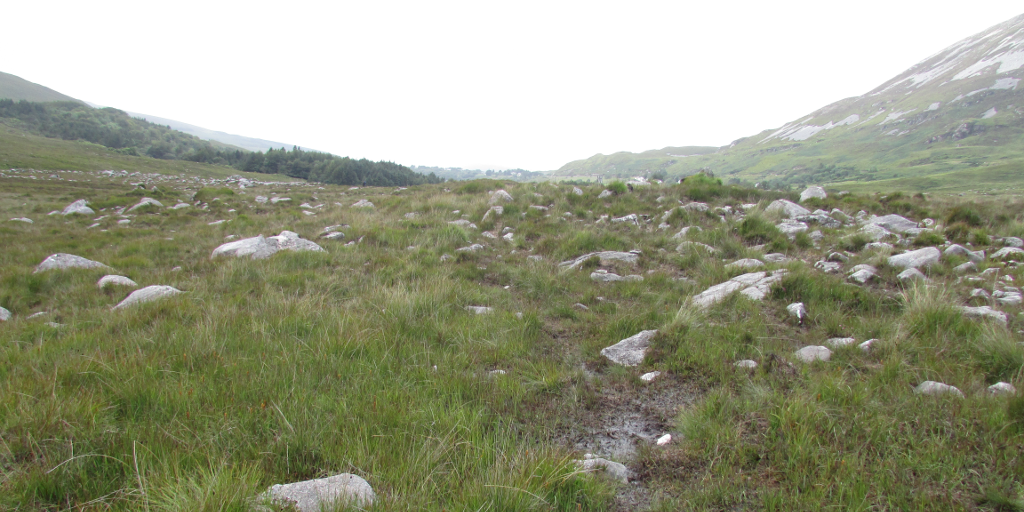This short story was first published in the March 2019 issue of The Niche, the magazine of the British Ecological Society, as part of their “Horizons” ecofiction series. “Horizons” aims to use fiction to help visualise a better future aided by ecological science.
For thousands of years the bogs have been building. Sopping sphagnum mosses blanket the land, covering the brown decay in springy apple-green. They knit industriously, binding the ground, creating a landscape…
The slim-branched birch looms from its hole in the sphagnum carpet. With its stand of sisters, it is a giant above mosses. Its roots drink the tea-brown waters and its elegant trunk begets drooping branches, which beget the furred stalks and catkins and the squatly triangular leaves. Long persisting, always reaching, the birch in its stand did not know the complicated processes that had birthed it, but it knew the sodden acid soil under the soft carpet, it knew the kiss of the upland sun, and it knew the tickle of an invader on its leaf…
Munching along the leaf, the plodding caterpillar did not know it was an invader. All it knew was eating. It had been eating since it crawled from its egg, a kitten among the catkins, and it was eating still. Its stubby prolegs gripped the edges of the birch leaf while its mandibles sliced and its round head bobbed, until the leaf was so many swallowed shavings. Satisfaction. Until a gust of wind shook the leafy world, the birches rustled, and the caterpillar fell…
All night, every night, the shrew hunted for spiders, beetles, larvae. Protein. Food. Morning was breaking, but it needed more. It ran over the sphagnum. Up to the stand of birches. There, a shadow. A predator? The shrew stopped. Whiskers quivered. It passed. The shrew ran on. In front, something fat and green. The shrew darted to it. Its whiskers told: A caterpillar, wriggling on wet ground. Tiny paws grabbed it. The shrew’s snout opened, and inside were teeth. The caterpillar’s round head was shoved in first, chewed, swallowed. The rest followed, down to the forked tail. Full, for now. The shrew ran towards the edge of the bog…
The hen harrier surged through the warming morning air. His sleek grey wings could rocket him above the birches’ light crowns to dance above the heather and vanish over the hungry hills, where his fierce eyes saw the whole quilted landscape. But now he was hunting, flying low beside the birch stand, where foolish prey could be surprised. There, scuttling in the heather. A shrew. The harrier dropped and took the quarry in its talons. The harrier circled the birch stand to where their nest hid in the heather. His mate flew to meet him and with a juggler’s deftness he flicked the shrew’s bedraggled body into the air. She manoeuvred and caught it as it fell, then returned to the all-important nest…
The tractor crashed across the bog like a tank bound for the Ardennes. The birches rattled as it passed, their rustling like indignant murmurs. It lugged a Turbo Chain Cutter behind, 2 metres long, ready to tear through what millennia had built. The faceless metal did not see the bog. It did not see the nest that had been so carefully hidden, or the perfect eggs that lay inside, or the mother that sat on them. All were consumed by the insatiable diesel dragon…
… until it came up against the words. Words like “Annex I of the EU Habitats Directive”, “Special Area of Conservation”, and “Habitat 91D0”. Words and knowledge: “Rare Alder Kitten moth”, “Foraging Sorex minutus”, “Breeding Circus cyaneus”. Words and knowledge, that piled up over years like vegetation in a bog, that even a Turbo Chain Cutter could not cut through.
As peace returned to the bog, the sphagnums continued their quiet work.
About the Author
Fionn Ó Marcaigh is a PhD student in Nicola Marples’ research group in the Department of Zoology, Trinity College Dublin. He studies birds on Indonesian islands to uncover the factors underlying the evolution of new species, supported by the Irish Research Council. Find out more about his research here:
Website | TCD Zoology Profile
Twitter | @Scaladoir
Research Gate | Profile
LinkedIn | Profile
______________
Related Posts
Ostrich Knees by Frank Jeal
Research Haikus by Various Department Members
Photo: The Poisoned Glen, Co. Donegal, by Fionn Ó Marcaigh

